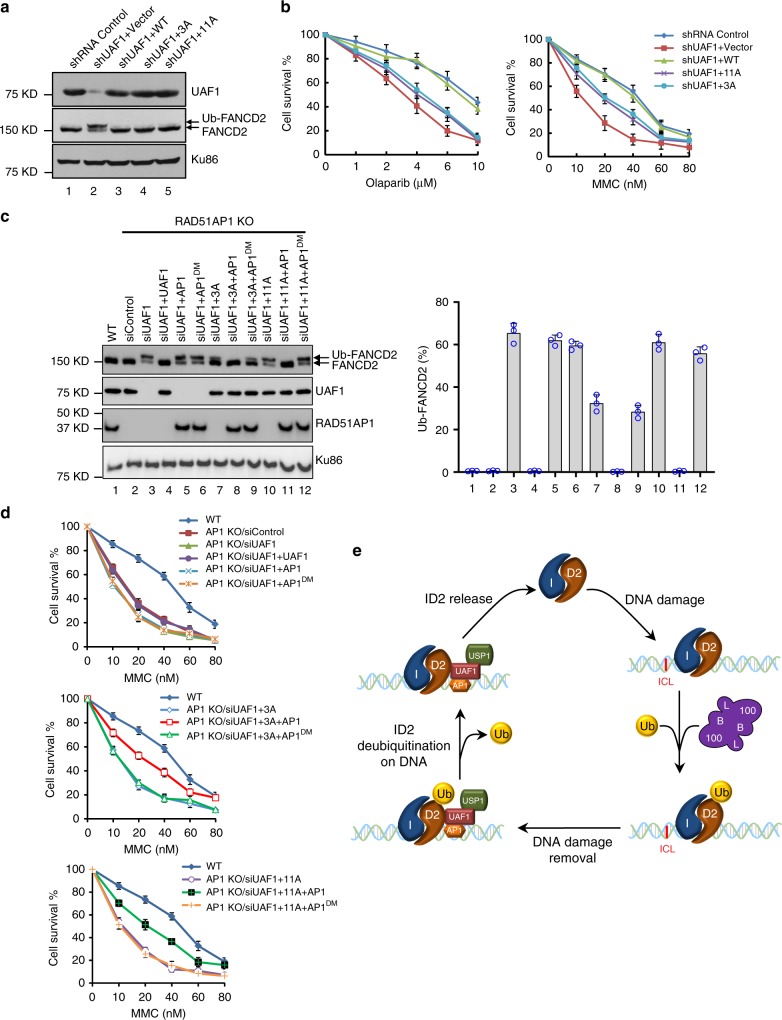Fig. 4.
Role of UAF1 and RAD51AP1 in FANCD2 deubiquitination in cells. a HeLa cells depleted for endogenous UAF1 and stably expressing UAF1 (WT), UAF13A (3A), or UAF111A (11A) were examined for their level of ubiquitinated FANCD2 by western blotting. Ku86 was included as the loading control. b Survival of cells (from a) upon treatment with MMC or olaparib. The error bars represent mean values±S.D. of data from three independent experiments. c RAD51AP1 knockout HeLa cells depleted for endogenous UAF1 and stably expressing WT or mutant UAF1 with or without the co-expression of either RAD51AP1 (AP1) or the RAD51AP1DM (DM) mutant were examined for their level of ubiquitinated FANCD2. Ku86 was included as the loading control. The error bars represent the mean+S.D. of data from three independent experiments. d Survival of cells (from c) upon treatment with MMC. The error bars represent mean values±S.D. of data from three independent experiments. e Model for the role of the USP1-UAF1-RAD51AP1 complex in the FA pathway. Mono-ubiquitination and deubiquitination of FANCD2 both occur on DNA. DNA binding by either UAF1 or RAD51AP1 is sufficient for targeting the trimeric DUB complex to DNA bound, mono-ubiquitinated FANCD2

